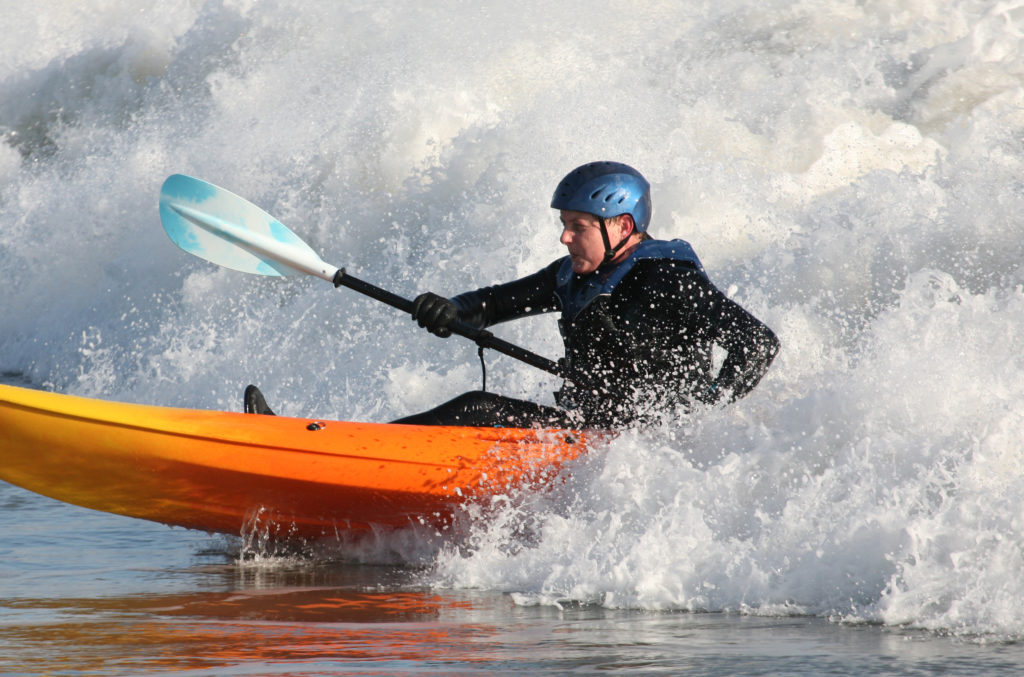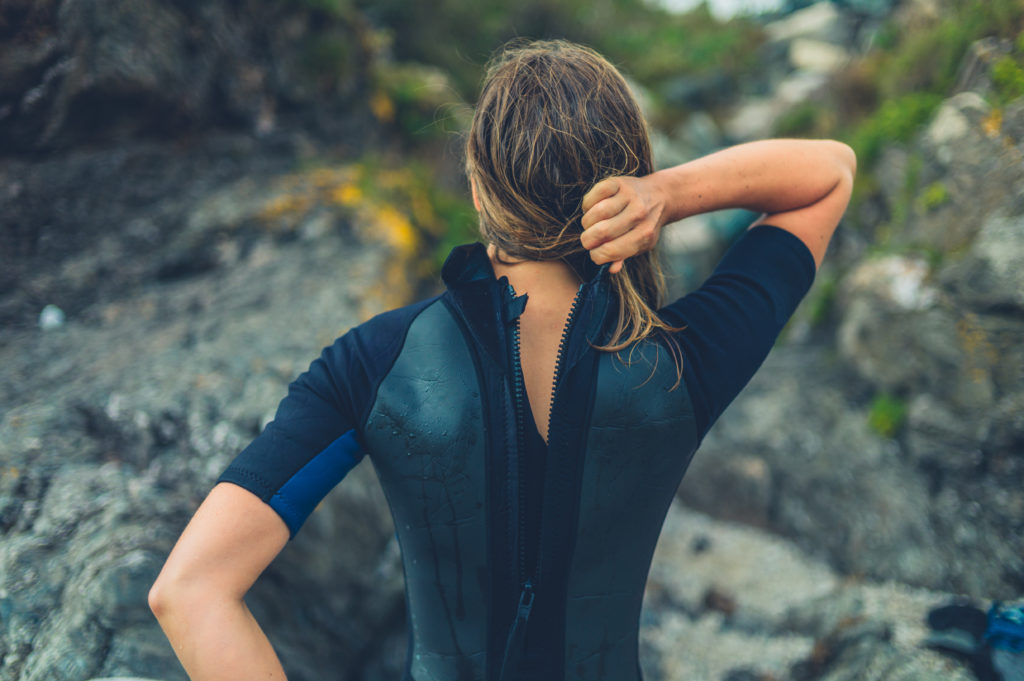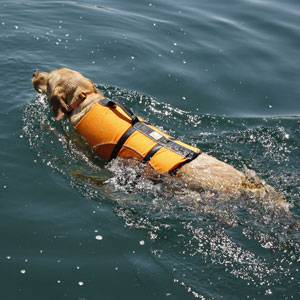There’s nothing like being out on the water. When the sun is shining, and the water is warm, you can always catch people pulling out their kayaks and heading to the shore. But what about when the weather changes? When the water isn’t the same temperature of your heated pool? In times like these, you’ll be looking to decide if you should wear wetsuit vs drysuit kayaking gear.
These protective layers are perfect if you’re looking to extend your paddling season, or, like most of us, you find yourself kayaking in cooler-temperature waters. Together with your life jacket, they may even help save your life. We always believe in safety first here at Life Jacket Advisor. Situations on open bodies of water can quickly turn serious, and preparation is key. That’s why we recommend following the old advice — dress for the water, not the weather.

In this post, we’ll compare a wetsuit vs drysuit for kayaking, and which you should consider for your needs.
Table of Contents
What’s the Difference Between a Wetsuit and a Drysuit?
Before you fill your cart, let’s take a look at both of these protective options so you can make the best decision. Today, we’ll specifically discuss wetsuits vs. drysuits for kayaking. We’ve also put together a general wetsuit vs. drysuit guide for other activities.
What is a Wetsuit?
If you’ve gone scuba diving or surfing, you may already have experience with wet suits. These form-fitting suits are usually made from a closed-cell neoprene foam and take advantage of your body heat to help protect you from the elements.
When you enter the water, a thin layer of water enters the wet suit, and is trapped between your body and the suit. Your body heat warms up that thin layer of water, insulating you against the colder water outside.
To be as efficient and protective as possible, wetsuits are designed to fit tight against your skin. This helps trap that thin layer of water without wasted space or allowing warmed water to escape.
Wetsuits come in various different thicknesses and styles. In warmer weather and water conditions, a top-only wet suit may be all that’s required. But in colder conditions, a thicker wet suit that covers the whole body will provide better comfort and protection.
What is a Drysuit?
You can see the visual differences in a dry suit. These full-coverage suits have a heavy-duty feel, and extend to the wrists, ankles, and even to your neck. The key difference from a wetsuit, as you might guess, is that dry suits are waterproof. Their waterproof zippers and seals keep water out while keeping you warm and dry inside. To ensure you stay that way, it is important to know how much weight your kayak can safely support.
Drysuits are made from nylon, vulcanized rubber, or crushed neoprene. They also have a much looser fit than wetsuits, as they are designed to layer clothing underneath them, rather than fit against the skin. Knowing what to wear when kayaking is an important step in getting out on the water.
Wetsuit vs. Drysuit — Pros and Cons
Whether you are just learning to kayak or are already an experienced paddler, there are some considerations to make for each type of suit. Whether you choose one or the other depends on your local water conditions, your budget, personal comfort, and more.

Wetsuit Pros
- Because of their skin-tight fit, wetsuits allow for more mobility and movement than dry suits.
- Swimming is easier in a wetsuit than a bulkier dry suit.
- The neoprene in a wetsuit provides greater flexibility in warmer conditions.
- Different thicknesses and styles allow for customization.
- Compared with dry suits, wetsuits are easier to care for and maintain.
- If you prefer a snug, tight fit, you may find a wetsuit more comfortable to wear.
- Wet suits are generally much more affordable than a dry suit. You can often purchase a high-end, quality wetsuit for less than an entry-level dry suit.
Wetsuit Cons
- Wetsuits do not provide protection from wind when out of the water.
- Wetsuits will not keep you dry.
- Especially when wet, wetsuits are known for being difficult to put on and take off. Prepare to wrestle!
- Generally, wetsuits do not last as long as dry suits, even when well-maintained.
- Wetsuits provide little to no actual thermal protection, making them unsuitable for most temperatures below 48°F.
Dry Suit Pros
- If you prefer looser clothing, the dry suit could be a more comfortable fit.
- Dry suits keep you dry when kayaking, which should be most of the time!
- Drysuits protect you from the wind, reducing wind burn and wind chill.
- Dry suits allow you to wear layers underneath, for warm and cold weather comfort.
- Dry suits are easy to get in and out of, and you don’t have to change.
- With basic care, dry suits can last for over 10 years of use.
- Paired with layers, a dry suit can be used in low temperatures, well below 48°F.
Dry Suit Cons
- Dry suits’ added bulk can make paddling or swimming more difficult.
- Dry suits cost considerably more than a wet suit, often from $500 to over $1,000.
- If your dry suit develops seam or seal damage, it becomes functionally useless and must be repaired.
- You must combine a dry suit with base and/or mid-layers.
Is a Wetsuit or a Drysuit Better for Kayaking?
As you can see, there isn’t a hard and fast rule when it comes to what’s best for kayaking. So if you’re asking yourself “Do I need a drysuit for kayaking?”, the best answer is likely: “It depends.”
Unless you frequently kayak in cold temperatures, and cold water temperatures below 48 °F, a dry suit may be more protection than you need. However, if wind is common on your waters, you may prefer the warm, dry, wind protection that only a dry suit can provide.
After shopping for and purchasing your ideal kayak, you may not have the budget for an expensive dry suit. A more budget-friendly wetsuit could be a great solution, especially if you are in a warmer climate.
This handy chart can help you to know what to wear in your conditions for comfort and safety.
| Wetsuit/Drysuit Temperature and Thickness Guide | ||
| Water Temperature | Clothing Type | Thickness (mm) |
| +80 °F | Skin guard or rash guard | — |
| 72 – 79 °F | Top or ‘shorty’ wetsuit | 0.5 to 2/1 mm |
| 68 – 72 °F | Springsuit or full wetsuit | 2 mm to 3/2mm |
| 64 – 68 °F | Full wetsuit | 3/2mm to 4/3mm |
| 59 – 64 °F | Full wetsuit | 4/3m to 5/4mm |
| 54 – 59 °F | Full wetsuit | 5/4mm to 6/5mm |
| 48 – 54 °F | Full wetsuit or drysuit | 6/5mm to 7+mm |
| < 48 °F | Drysuit | — |
Bottom Line
On your next kayaking adventure, both a wet suit and a dry suit can be a great addition to your gear. Each style of suit has its own benefits, along with drawbacks you should consider. Whichever style you choose, be sure to pair your exposure suit with a certified and reliable personal flotation device (PFD). We’ve gathered some of what we believe are the best kayaking life jackets available, and reviewed them all. With these tips, you’ll be on your way to more happy days on the water!


